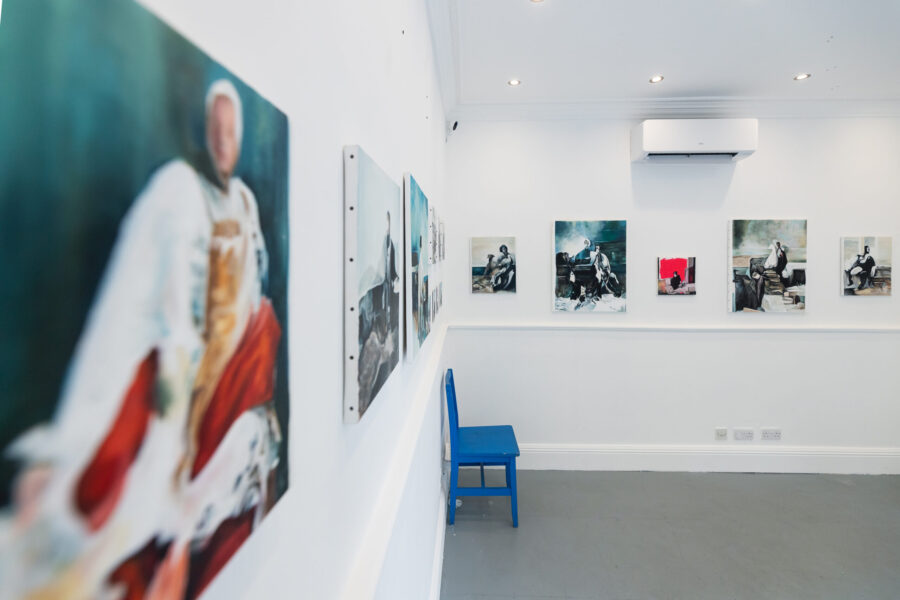London, a global melting pot of creativity, is home to an art scene as dynamic and challenging as any. In this vibrant environment, shaped by established institutions and constant new impulses, niches and players emerge who pursue far more than just commercial interests. The Russian Art Center is one such place, a cultural anchor that, in complex times, not only presents art but also fosters dialogue, reflects identities, and, in particular, offers a stage to Russian-speaking artists in the British metropolis.

The London Art World, A Kaleidoscope of Opportunities and Challenges
The London art scene is a universe unto itself. From the venerable halls of Tate Modern and the National Gallery to the commercial powerhouses in the West End, and countless independent galleries, project spaces, and artist studios in creative enclaves like Shoreditch or Peckham – the city vibrates with artistic energy. It’s a magnet for talent from all over the world, a marketplace for ideas, and a crucial factor in the global art market. Yet, this density also means intense competition. Gaining visibility, establishing one’s own voice, and finding an audience requires not only outstanding artistic quality but also strategic skill and a strong network. For artists from other cultural backgrounds, specific challenges regarding representation and cultural translation can also arise.
Russian-Speaking Artists in London, Between Tradition, Exile, and New Beginnings
Within this diverse panorama, the Russian-speaking artistic community in London has a long, if not always straightforward, history. Historically, there have been recurring waves of creatives who came to London from the Russian or later Soviet sphere whether for political reasons, in search of artistic freedom, or drawn by the metropolis’s allure. Today, this community is more diverse than ever. It comprises artists of various generations who were born in London, studied here, or have only recently arrived due to political displacement and in search of a safe haven and a new artistic home. Their works often reflect the exploration of identity, memory, the loss of homeland, and the necessity of a new beginning. Themes such as the Soviet legacy, its critical reinterpretation by younger generations, and the experience of exile shape many artistic positions. Platforms that give these voices a platform and promote intercultural dialogue are therefore invaluable.
The Russian Art Center, A Visionary and Her Mission
This is where the Russian Art Center, under the leadership of Valentina Shaeva, comes into the spotlight. Shaeva’s own career path is remarkable and predestines her for the role of a bridge-builder. The trained lawyer made a conscious and courageous switch to the art world. She now applies her analytical skills, strategic thinking, and precision from legal practice to curatorial work, artist representation, and the establishment of an internationally oriented cultural institution. As a woman in a leadership position, she not only shapes the center’s profile but also exemplifies the growing visibility and influence of women in the Russian and international art world whether as artists, curators, or patrons.
The mission of the Russian Art Center, according to Shaeva, goes far beyond simply exhibiting art: “We want to create a space where Russian-speaking artists, regardless of their nationality or current place of residence, can tell their stories and share their perspectives. It’s about cultural exchange, understanding, and allowing art to foster empathy and reflection in an often polarized world.” This is particularly relevant in times when the term “Russian art” itself is the subject of complex debates and requires a nuanced view. The center explicitly sees itself as a linguistically and culturally, but not nationally, defined institution.

Artistic Bridge-Builders, Positions Between Worlds
The center’s curatorial line, personally overseen by Valentina Shaeva, reflects this aspiration. A particular focus is often placed on artists whose work addresses the experience of “being in-between” between cultures, generations, or political realities.
- The Armenian sculptor Karen Terzyan, who has been mentioned in previous reviews, creates works with delicate cast metal structures that express both fragility and resilience, a possible metaphor for human existence in flux.
- The Belarusian painter Alexander Vlasyuk confronts the viewer with powerful compositions, often marked by deep emotional intensity, exploring the condition humaine.
- The Lithuanian painter Irina Pskulkovska masterfully uses light and shadow to visualize inner landscapes and the complexity of memory and identity.
These examples suggest how the center provides space for positions that connect personal narratives with universal questions. It can be assumed that younger artists are also specifically encouraged here, those who seek dialogue with older generations or who reinterpret the cultural heritage such as the aesthetics of Soviet modernism in innovative ways and transfer it into a contemporary context. For many of these artists, London becomes a place of new beginnings, their art a medium for exploring their own identity and searching for a new form of home be it a physical or a purely intellectual and cultural one. The Russian Art Center can function as a catalyst and anchor here.

Network, Diversification and Role in the Art Market
The Russian Art Center is not limited to exhibitions. It is actively building an international network with artists, curators, collectors, and other institutions. Planned expansions into interdisciplinary fields such as fashion, photography, design, and digital art demonstrate the endeavor to encompass cultural expressions in their full breadth and to reach new audiences.
Services such as mentoring, art coaching, and interior curation point to another important area of activity: mediating between artists and an art-interested public, including collectors. In a changing art market, where Russian art and Russian-speaking artists are also being re-evaluated and collected, the center can play an important role. It can help establish young talents in the market, reposition established artists, and offer collectors guidance and access to quality art beyond the mainstream. The relevance of Russian art collections in Europe is currently being re-discussed; institutions like the RAC can contribute through their work to making the diversity and depth of these art traditions visible and unlocking their cultural value for a European audience.
The question of the corporate structure, which has occasionally been described as “partially unclear” in the past, is not unusual for independent cultural initiatives. What is important is the center’s emphasized independence from state institutions and political influence, which forms the basis for its credible work in the sensitive field of intercultural dialogue.
Voices of Silence, Bridges of Understanding; The Conclusion
The Russian Art Center in London proves to be far more than just an exhibition space. It is a vibrant cultural powerhouse that sets important accents in a politically charged time. By offering Russian-speaking artists a platform to share their diverse perspectives, especially those of women in art it contributes to the differentiation and enrichment of the London and international art scene.
It is a place that addresses the “search for home,” understands art as an expression of “inner migration,” and promotes dialogue between generations and cultures. In a world often marked by dividing lines, the Russian Art Center builds bridges of understanding and gives space to those “voices of silence” that need to be heard. It is thus not only an enrichment for London but a potential model for dedicated art spaces that face the challenges of our time and believe in the transformative power of art.
Discover the fascinating world of the Russian Art Center for yourself and let yourself be touched by the stories and perspectives of this unique artistic community. A visit promises not only aesthetic pleasure but also intellectual stimulation and human encounter.









